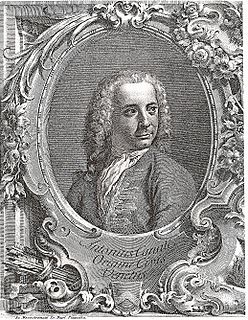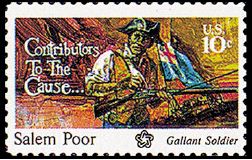
The American Revolutionary War (1775–1783), also known as the American War of Independence, was an 18th-century war between Great Britain and its Thirteen Colonies which declared independence as the United States of America.

The Merchant of Venice is a 16th-century play written by William Shakespeare in which a merchant in Venice (Antonio) must default on a large loan provided by a Jewish moneylender, Shylock. It is believed to have been written between 1596 and 1599. Though classified as a comedy in the First Folio and sharing certain aspects with Shakespeare's other romantic comedies, the play is most remembered for its dramatic scenes, and it is best known for Shylock and the famous "Hath not a Jew eyes?" speech on humanity. Also notable is Portia's speech about "the quality of mercy". Critic Harold Bloom listed it among Shakespeare's great comedies.

La traviata is an opera in three acts by Giuseppe Verdi set to an Italian libretto by Francesco Maria Piave. It is based on La Dame aux camélias (1852), a play adapted from the novel by Alexandre Dumas fils. The opera was originally titled Violetta, after the main character. It was first performed on 6 March 1853 at the La Fenice opera house in Venice.

Joseph Mallord William Turner, known as J. M. W. Turner and contemporarily as William Turner, was an English Romantic painter, printmaker and watercolourist. He is known for his expressive colourisations, imaginative landscapes and turbulent, often violent marine paintings.

Giovanni Antonio Canal, better known as Canaletto, was an Italian painter of city views or vedute, of Venice, Rome, and London. He also painted imaginary views, although the demarcation in his works between the real and the imaginary is never quite clearcut. He was further an important printmaker using the etching technique. In the period from 1746 to 1756 he worked in England where he painted many views of London, and other sites as far north as Warwick Castle and Alnwick Castle. He was highly successful in England, thanks to the British merchant and connoisseur Joseph "Consul" Smith, whose large collection of Canaletto's works was sold to King George III in 1762.

The Olive Branch Petition was adopted by the Second Continental Congress on July 5, 1775 and signed on July 8 in a final attempt to avoid war between Great Britain and the Thirteen Colonies in America. The Congress had already authorized the invasion of Canada more than a week earlier, but the petition affirmed American loyalty to Great Britain and beseeched King George III to prevent further conflict. It was followed by the July 6 Declaration of the Causes and Necessity of Taking Up Arms, however, which made its success unlikely in London. In August 1775, the colonies were formally declared to be in rebellion by the Proclamation of Rebellion, and the petition was rejected by Great Britain—even though King George had refused to read it before declaring the colonists traitors.

William Dawes Jr. was one of several men in April 1775 who alerted colonial minutemen in Massachusetts of the approach of British army troops prior to the Battles of Lexington and Concord at the outset of the American Revolution. For some years, Paul Revere had the most renown for his ride of warning of this event.

Admiral Augustus John Hervey, 3rd Earl of Bristol, PC was a Royal Navy officer and politician. He commanded the sixth-rate HMS Phoenix at the Battle of Minorca in May 1756 as well as the third-rate HMS Dragon at the Capture of Belle Île in June 1761, the Invasion of Martinique in January 1762 and the Battle of Havana in June 1762 during the Seven Years' War. He went on to be Chief Secretary for Ireland and then First Naval Lord. He was known as the English Casanova, due to his colourful personal life.

Salem Poor (1747–1802) was an African-American slave who purchased his freedom, became a soldier, and rose to fame as a war hero during the American Revolutionary War.

A liberty pole is a tall wooden pole, often used as a type of flagstaff, planted in the ground, surmounted by a Phrygian cap. The symbol originated in the immediate aftermath of the assassination of Roman dictator Julius Caesar by a group of Rome's Senators in 44 BC. Immediately after Caesar was killed, the leaders of the assassination plot went to meet a crowd of Romans at the Roman Forum; a pileus was placed atop a pole to symbolize that the Roman people had been freed from the rule of Caesar, which the assassins claimed had become a tyranny because it overstepped the authority of the Senate and thus betrayed the Republic. In his "Apotheosis of Venice" (1585) Paolo Veronese has the ascendant Venice flanked by several symbolic persons, one of whom represents Liberty, dressed as a peasant hoisting a red Phrygian cap on a spear. During the French revolution, the Roman pileus was confused with the Phrygian cap, and this mis-identification then led to the use of the Phrygian cap as a symbol of liberal democratic republicanism.

Robert Salmon was a maritime artist, active in both England and America. Salmon completed nearly 1,000 paintings, all save one of maritime scenes or seascapes. He is widely considered the Father of American Luminism.
Sir (James) Angus Gillan was a Scottish rower and colonial service official. He competed in the 1908 Summer Olympics and in the 1912 Summer Olympics.

Antonio Tozzi was an Italian opera composer.
Sir John Boyd, 1st Baronet Boyd was a sugar merchant and vice-chairman of the British East India Company. He built Danson House, and was the first English owner of the Piranesi Vase.

Sir Richard Worsley, 7th Baronet, was a British politician who sat in the House of Commons between 1774 and 1801. He was a noted collector of antiquities.
Gennaro Astarita was an Italian composer, mainly of operas. The place of his birth is unknown, although he was active in Naples for many years. He began his operatic career in 1765, collaborating with Niccolò Piccinni in the writing of the opera L'orfana insidiata. He became the maestro di cappella in Naples in 1770.

Venanzio Rauzzini was an Italian castrato, composer, pianist, singing teacher and concert impresario. As a boy he was a member of the Sistine Chapel Choir. He studied with Giuseppe Santarelli in Rome and Nicola Porpora in Naples. It has been suggested that Rauzzini may not in fact have been a castrato, but rather had an endocrine condition that prevented his voice from breaking, hence his many affairs as he was thought to be "safe".

Captain Charles Stuart was an Anglo-Canadian abolitionist in the early-to-mid-19th century. After leaving the army, he was a writer, but was notable for his opposition to slavery.
Thomas Hervey, of Bond Street, London, was an English pamphleteer and politician who sat in the House of Commons from 1733 to 1747. He became embroiled with the wife of a neighbour who left her husband, and the ensuing dispute brought him to the brink of madness. He was noted for his eccentric open letters.



















